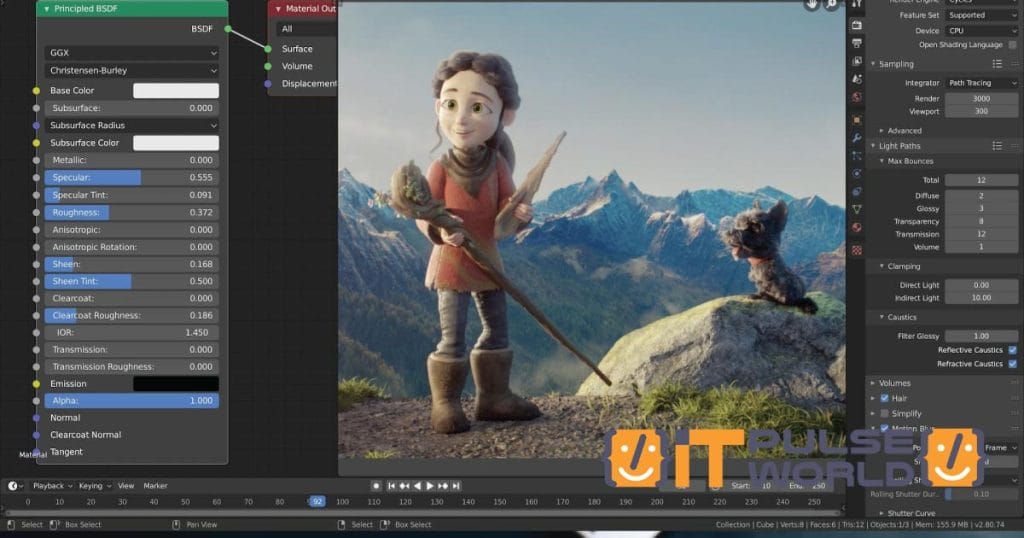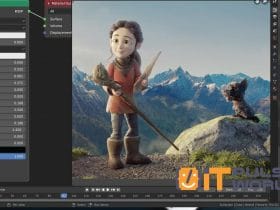Blender: The most used open source software in the 3D industry
LATEST POSTS

A powerful open-source program with applications in 3D printing, animation film, video games, and even architectural design.
In the micro-world of 3D design and animation, Blender has become an indispensable tool. In fact, it could be said that it is the Microsoft of 3D Art, in terms of market hegemony. It is open source software, which means that its source code is accessible and free for anyone who wishes to study, modify and distribute it.
This open and collaborative nature has led to a global community of developers, artists and enthusiasts continually striving to offer the best possible version of the program . In addition, the fact that it is free removes economic barriers and democratises this technological field, so important for industries such as 3D printing, film, video games and even real estate development.
It was created by Ton Roosendaal in 1994, while he was working at the Dutch animation studio NeoGeo. Initially, Blender was an internal tool used for his animation projects. But in 1998, its creator founded the company Not a Number (NaN) to give the program a wider reach. At this stage, Blender was a commercial and closed software, which limited its availability and accessibility to the general community.
However, in 2002, the situation changed dramatically. The company was facing financial difficulties and was on the verge of bankruptcy. But its community of users came together to raise funds and push forward the “Free Blender” campaign. In the end, they succeeded in their goal of releasing the source code and turning it into an open source tool.
Since then, Blender has continued its development with the support and contributions of an active community of developers around the world. The Blender Foundation was established as a non-profit organization to coordinate and support the continued development of Blender, ensuring that the software remains free and accessible to all.
Blender Highlights
Over the years, Blender has seen numerous major updates and improvements. New features, tools, and capabilities have been added, leading to its growth and popularity as a powerful 3D modeling and animation suite.
1. Cycles Rendering Engine: Blender features an impressive Cycles rendering engine, allowing users to create photorealistic images with global illumination and support for both GPU and CPU.
2. Modeling and Sculpting: Blender offers powerful tools for creating 3D models and sculptures, allowing artists to intuitively bring their ideas to life.
3. Animation and Simulation: The ability to animate objects, characters, and scenes with a wide range of simulation tools and options gives users complete control over their projects.
4. Video Editing: Blender is not just limited to 3D creation, but also offers a complete set of tools for video editing, making it a one-stop solution for multimedia creators.
5. Rigging and facial animation: With Blender, artists can create character rigs and achieve realistic facial animations with its powerful shape key control system.
Main Blender Applications
Blender has gained a fundamental role in various 3D industries thanks to its versatility and ability to adapt to multiple uses. Some of the areas where it has left a significant mark are
1. Animation and Film: Blender has been used in the production of short films, commercials, and feature-length animation. Its ability to create stunning characters, scenes, and visual effects has made it a valuable tool for filmmakers and animation studios.
2. Video Games: In the video game industry, Blender has been leveraged to create character models, environments, and animations. It is also a useful tool for independent developers looking for high-quality, open-source assets for their games.
3. 3D Printing: 3D printing has revolutionized manufacturing, and Blender has become a useful tool in this area. It allows designers to create detailed 3D models that can then be printed for a variety of purposes, from prototypes to art objects.
4. Architectural Design: In the field of architecture, Blender has been used to visualize and render 3D models of buildings and spaces. This helps architects and designers present their ideas in a more realistic and attractive way.
5. Designing 3D characters and models for the web: In the digital age, 3D design has become essential for websites and applications. Blender allows you to create interactive and engaging 3D elements to enhance the online user experience.




